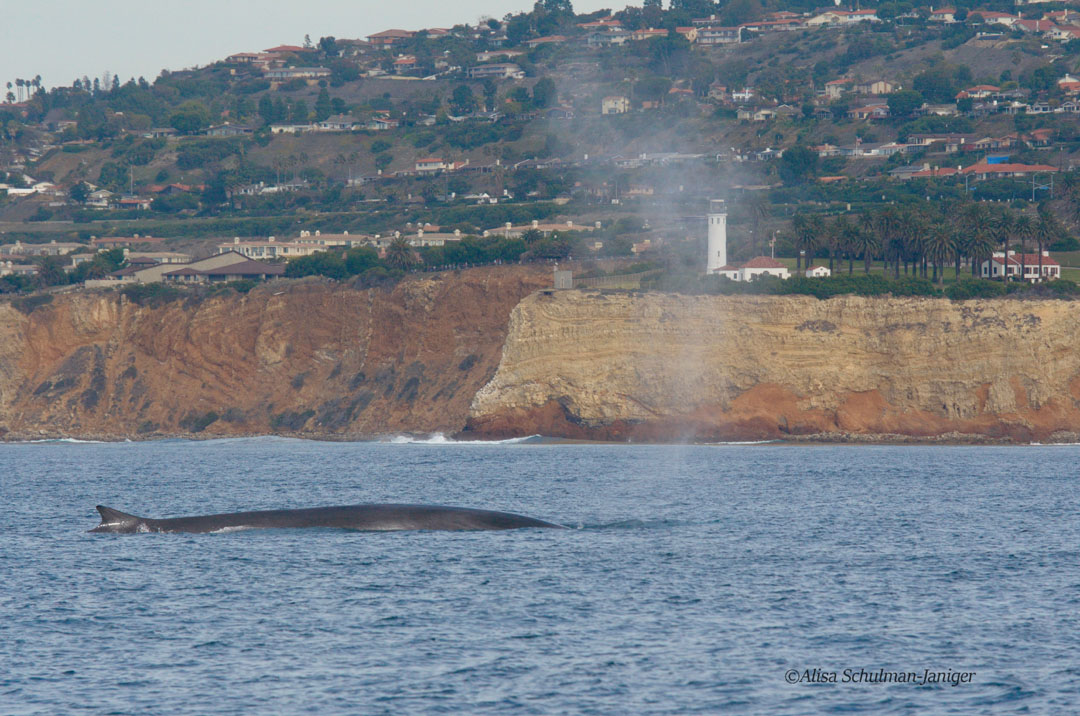Whale Count
From Point Vicente
Become a Member
Volunteer
Events


Located at the Point Vicente Interpretive Center
Latest Gray Whale Count
This project runs during daylight hours, from December 1st through late May, on the patio of the Point Vicente Interpretive Center.

Background
It is sponsored by the Los Angeles Chapter of the American Cetacean Society, and is staffed by teams of trained volunteers from the American Cetacean Society, the Cabrillo Whalewatch Program, and the general public. Except for 1981-82 and 1982-83, this project has operated annually since 1979 from Long Point or Point Vicente; during past seasons parallel stations have operated from Santa Catalina Island and Santa Cruz Island. Our primary station since the 1985-86 season has been the patio of the Point Vicente Interpretive Center (PVIC). Though the generosity of PVIC and the City of Rancho Palos Verdes, we are back on the patio of PVIC. We have great views of marine life from our cliffside post 125 feet above sea level, where the water depth abruptly drops off close to shore.
This station runs from 1 December through late May during daylight hours, seven days a week. The official project binoculars are Fujinon 7Ч50, with built-in reticles and compass. All participants use binoculars, and several confirm and detail sightings with spotting scopes. Weather data, including visibility and sea conditions, are recorded at least hourly. Observers identify and record various marine mammals and their behaviors, focusing on gray whales. Because the majority of gray whales use off-shore migratory routes in this area (primarily through the Channel Islands), especially on the southbound migration, we see only a small proportion of the total gray whale population, so our counts cannot be used to determine that population. Instead, our project focuses on ascertaining seasonal usage of the nearshore migratory path, and documents changing trends over time. Variable weather and shifts in migratory path preferences result in annual counts that fluctuate dramatically, which does not necessarily mean the gray whale population is likewise fluctuating. We especially detail calf sighting in both the southbound and northbound migration, which helps track trends in calf recruitment.
Spotters also detail migratory behaviors observed, including breaching, spyhopping, rolling, courtship, apparent nursing, possible feeding, and interaction with kelp and with other marine mammals. Participants also note possible human impacts on gray whales, including boat interactions, possible harassment incidents, and entanglements. In addition, we identify and record behaviors of any other marine mammals that utilize these waters, including common dolphin, Pacific bottlenose dolphin, Pacific white-sided dolphin, Risso’s dolphin, northern right whale dolphin, killer whales, false killer whales, pilot whales, Dall’s porpoise, sperm whales, minke whales, humpback whales, blue whales, fin whales, California sea lions, harbor seals, northern elephant seals, and southern sea otters. When possible, attempts are made to cross-check and augment notes on individually identifiable cetaceans with photos and behavior data collected from commercial and private whalewatching boats.
For more information please contact the Census director, Alisa Schulman-Janiger









